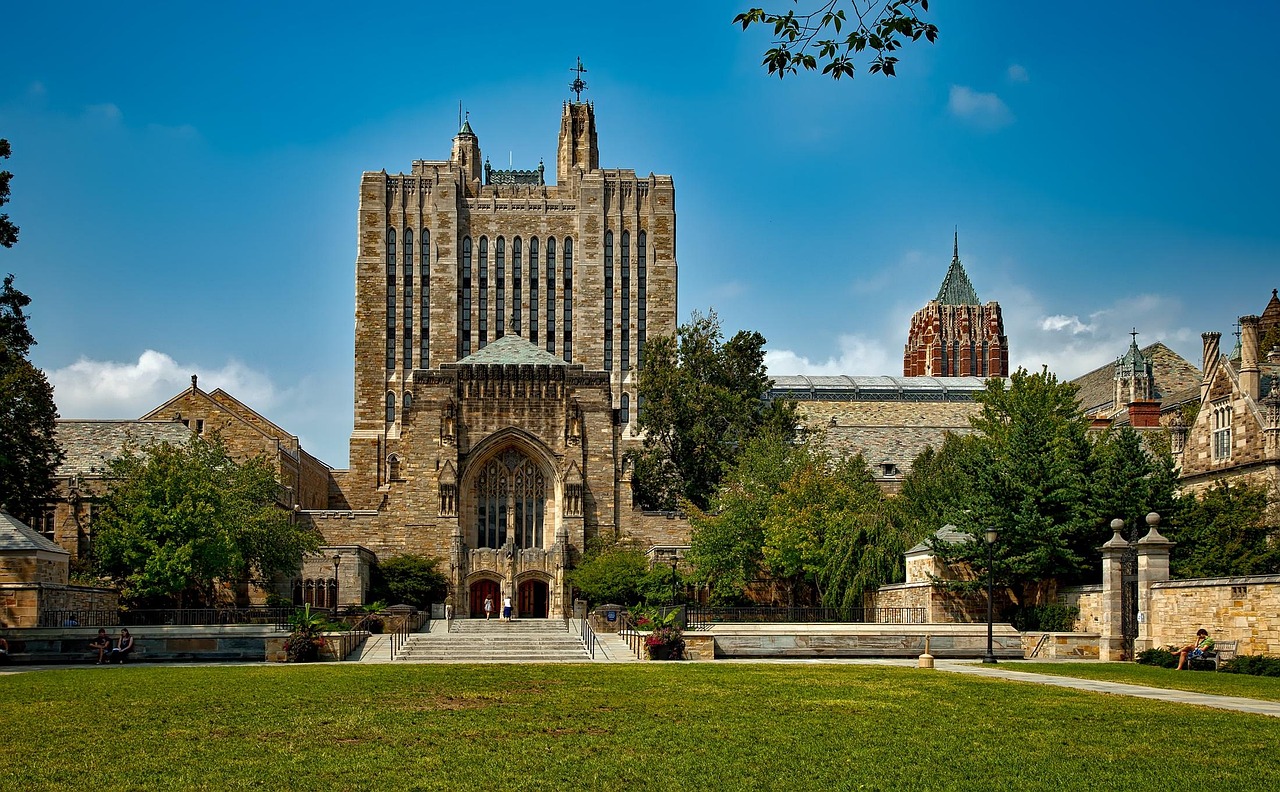The Ivy League refers to eight private universities in the northeastern United States that originally joined together as an athletic conference in 1954. Over time, the term has come to symbolize academic prestige, selectivity, and global influence. The eight Ivy League schools are Brown University, Columbia University, Cornell University, Dartmouth College, Harvard University, Princeton University, the University of Pennsylvania, and Yale University.
They’re known for world-class academics, distinguished alumni, and powerful networks that span industries and continents. While schools like Stanford and MIT often rival them in rankings and reputation, they’re not officially part of the Ivy League.
Keep reading to explore how this group came to define excellence in higher education – and how its influence continues to shape what “elite” means in today’s college landscape.
The History of the Ivy League
What exactly is the “Ivy League”? It’s a fair question – after all, the term often gets used as shorthand for excellence. But the Ivy League didn’t start as a group of elite universities looking to establish a distinct identity. It began, quite literally, as a sports league. In 1954, eight long-established private universities in the northeastern United States – Brown, Columbia, Cornell, Dartmouth, Harvard, Princeton, the University of Pennsylvania, and Yale – formed an official athletic conference. The goal was simple: to standardize competition among schools with similar academic and athletic values.
What none of them could have predicted was how the term “Ivy League” would evolve. Over the decades, the League’s name became synonymous with intellectual rigor, highly selective admissions, and deep-rooted tradition. The “ivy” itself became a symbol of permanence and prestige. Ivy vines climbing up centuries-old brick or stone walls came to represent not just age, but endurance – the idea that education at these institutions shapes people who go on to shape the world.
By the late 20th century, the Ivy League had transcended its athletic origins. It moved on from sports to encompass a shared identity: schools that set the standard for academic excellence and leadership across generations. Today, the Ivy League is both a historical alliance and a modern benchmark, representing not only academic tradition but also the evolving ideal of higher education in America.
Why Are Ivy League Schools Considered Elite?
Ivy league institutions are the result of centuries of intellectual tradition, influential alumni, and a shared commitment to excellence that extends far beyond academics. Here’s what makes them stand out:
1. A Legacy of Academic Innovation
Each Ivy League university has played a defining role in shaping American higher education. Harvard, founded in 1636, is the oldest university in the US and helped set the standard for liberal arts education. Princeton pioneered research in physics and public policy; Columbia became a hub for journalism and international relations.
These schools often set modern academic trends because their long histories have allowed them to build unmatched resources, faculty networks, and research opportunities that continue to attract global talent.
2. Selectivity and Prestige
Another hallmark of the Ivy League is extremely selective admissions. These universities receive tens of thousands of applications each year and admit only a small fraction – often under 5%. Their admissions teams look for students who combine academic excellence with intellectual curiosity, leadership, and character. Here are are the latest Ivy League acceptance rates (from the schools’ Common Data Sets):
| University | Location | Class of 2029 Acceptance Rate (approx.) |
| Brown University | Providence, RI | 6% |
| Columbia University | New York, NY | 5% |
| Cornell University | Ithaca, NY | 8% |
| Dartmouth College | Hanover, NH | 6% |
| Harvard University | Cambridge, MA | 4% |
| Princeton University | Princeton, NJ | 4% |
| University of Pennsylvania | Philadelphia, PA | 5% |
| Yale University | New Haven, CT | 5% |
It’s also worth noting how dramatically Ivy League selectivity has increased over time, something many don’t fully realize. In the early 2000s, schools like Harvard and Princeton admitted roughly 10–15% of applicants. Today, those same acceptance rates are around 4%, with some cycles dipping even lower. Application numbers have exploded due to the Common App, test-optional policies, and expanding global interest, while class sizes have barely changed. The result is a far more competitive landscape than the one an earlier generation may have experienced a couple decades ago.
3. Global Reputation and Alumni Influence
Visit almost any major city, and you’ll find Ivy League alumni leading companies, serving in government, conducting groundbreaking research, or writing bestselling books. Alumni networks are very powerful, because they foster mentorship and opportunities across industries and generations.
From US presidents to Nobel laureates, Ivy League graduates have shaped industries and ideas around the world. That legacy continues to attract students who want to be part of the “global elite”.
4. Resources That Rival Nations
Most of the Ivy League schools have endowments in the tens of billions of dollars, allowing them to offer cutting-edge facilities, world-class faculty, and generous financial aid. Harvard’s endowment alone exceeds $50 billion, larger than the GDP of some countries.
These resources translate into a rich academic experience: small class sizes, undergraduate research opportunities, and funding for global travel, internships, and innovation projects.
Ivy League Schools vs. Other Top Universities
It’s a common misconception that the Ivy League represents all of the US’s best universities. While the eight Ivy League schools are undeniably prestigious, they’re not the only places offering “Ivy-caliber” education, resources, or networks.
In fact, some of the most innovative and prestigious institutions in the US, and indeed the world – like Stanford, MIT, Duke, the University of Chicago, and Caltech – rival or even surpass the Ivies in certain fields.
The Ivy League Is a Club, Not a Ranking
The Ivy League isn’t a list of “top eight schools in America.” Instead, it’s a historical designation (derived from an athletic conference for geographically close schools) that simply stuck. Other top schools didn’t join because they’re located outside the original geographic cluster and/or never competed in the same athletic circuit.
Yet, in public perception, “Ivy League” became synonymous with “elite.” That’s why people sometimes talk about “Ivy-equivalent” or “Ivy-plus” schools – universities that carry equal weight in global reputation, academic rigor, and alumni influence.
Stanford and MIT: Elite Peers Outside The Ivy League
Stanford University and the Massachusetts Institute of Technology are often mentioned in the same breath as the Ivy League. Both institutions embody the cutting edge of technology, entrepreneurship, and innovation.
Stanford’s location in Silicon Valley places it at the epicenter of the tech revolution. Its graduates founded companies like Google, Netflix, and Hewlett-Packard. MIT, meanwhile, continues to lead in engineering, data science, and sustainability – blending research and real-world application in ways that define modern education.
Both schools share the Ivy ethos of excellence, but with a culture that leans more toward collaboration, creativity, and experimentation than tradition.
Other “Ivy-Equivalent” Universities
Several other US universities are considered academic peers to the Ivies, including:
- University of Chicago – Renowned for its intellectual rigor and economics program.
- Duke University – Known for its balance of academic excellence, research, and vibrant campus life.
- Caltech – A powerhouse in physics and engineering.
- Northwestern University – Celebrated for journalism, business, and interdisciplinary learning.
Together, these institutions represent a broader ecosystem of excellence – proving that elite education isn’t confined to the Ivy League’s eight campuses.
Why This Matters for Applicants
For students aiming for a top US university, focusing solely on the Ivy League can unintentionally narrow your options. The Ivies are unquestionably prestigious, but they sit within a broader ecosystem of elite institutions – schools like Stanford, MIT, Duke, Chicago, Northwestern, and Caltech – that rival or exceed them in specific fields. These peer universities often offer strengths, cultures, and environments that may be an even better fit for your goals.
If you’re exploring a range of elite options, check out Fortuna’s College Roadmap Package for personalized guidance on identifying the best-fit schools for your goals.
Public Ivies and Little Ivies Explained
If the Ivy League is seen as representing the gold standard of private education, the Public Ivies and Little Ivies are its equally impressive cousins. These groups prove that world-class academics, tight-knit communities, and lifelong opportunities aren’t limited to the original eight.
What Are The Public Ivies?
The term “Public Ivy” was first coined in 1985 by author Richard Moll to describe public universities that offered an Ivy-level education at a state school price. Schools like the University of Virginia, University of North Carolina at Chapel Hill, University of Michigan, and University of California, Berkeley were among the first named.
These institutions combine academic excellence, strong research output, vibrant campus life, and national prestige. For many students, the Public Ivies provide an outstanding – and sometimes more accessible – path to a world-class education.
For example:
- UVA (founded by Thomas Jefferson) blends classical liberal arts with modern research and consistently ranks among the top public universities in the world.
- UNC Chapel Hill boasts a proud academic tradition and deep community spirit, with alumni who’ve shaped journalism, medicine, and law.
- UC Berkeley is a global leader in STEM and social movements alike, defining innovation and activism on the West Coast.
- UT Austin offers powerhouse programs in engineering, business, and computer science. Its “What starts here changes the world” ethos is reflected in a network that fuels innovation across Texas and beyond.
What Are The Little Ivies?
The “Little Ivies” refer to a group of small, highly selective liberal arts colleges in the northeastern US that emphasize close faculty mentorship, intellectual exploration, and community. These include schools such as:
- Williams College
- Amherst College
- Swarthmore College
- Bowdoin College
- Middlebury College
These institutions are smaller in scale but mighty in reputation – offering intimate classes, strong alumni networks, and outcomes that rival even the most famous Ivies. As one college counselor put it, “If the Ivy League is a symphony orchestra, the Little Ivies are chamber music – equally refined, just a bit more personal.”
Why They Matter
For students, the distinction between Ivy, Public Ivy, and Little Ivy often comes down to fit. Some will thrive in the bustling environment of Columbia or Cornell, while others will do better in the tight-knit atmosphere of Williams or the spirited public pride of Michigan.
Each of these categories represents a different path toward the same goal: a transformative education surrounded by motivated peers and world-class opportunities.
What The Ivies Look For In Candidates
While each Ivy League school has its own personality and priorities, they share a common approach to identifying students who will enrich their campuses and make an impact in the world. Ivy League admissions are holistic: they look well beyond grades and test scores to understand who you are, what you care about, and how you show up in your community.
At a high level, Ivy League schools look for:
- Academic excellence. Strong grades in rigorous courses (AP/IB/honors or equivalent) form the foundation. They also prize intellectual curiosity: students who think deeply, ask questions, and genuinely love learning.
- Impact and initiative. Ivies want students who don’t just participate, but lead. This can mean launching a project, driving change in your community, excelling in research, or committing meaningfully to a passion over time. Depth matters far more than a long activity list.
- Character and personal qualities. Admissions teams look for resilience, empathy, authenticity, integrity, and a sense of purpose. These traits shine through essays, recommendation letters, and interviews.
- Community contribution. Applicants who care about something bigger than themselves – who collaborate, support peers, and add to the school’s culture – stand out.
- Fit with the institution. Strong applicants understand what makes each Ivy distinct and articulate how they will both benefit from and contribute to the school’s academic and community life.
A Snapshot of Selectivity
Here’s an overview of average academic profiles among admitted classes across Ivy League schools (sourced from the schools’ Common Data Sets):
| University | Average GPA | Median SAT | Median ACT |
| Brown University | 3.95 | 1540 | 35 |
| Columbia University: Columbia College & Engineering | NA | 1540 | 35 |
| Columbia University: General Studies | NA | 1510 | 34 |
| Cornell University | NA | 1540 | 34 |
| Dartmouth College | NA | NA | NA |
| Harvard University | 4.21 | 1530 | 35 |
| Princeton University | 3.95 | 1530 | 35 |
| University of Pennsylvania | 3.9 | 1530 | 35 |
| Yale University | NA | 1530 | 34 |
Conclusion: The Ivy League as Symbol and Standard
For generations, the Ivy League has represented a pinnacle of academic achievement – an enduring symbol of excellence, influence, and opportunity. At the heart of these schools is an enduring belief that education should shape thinkers, leaders, and citizens who can and may contribute meaningfully to the world. The same spirit also thrives in many other top institutions, both in the US and around the world.
Whether your goal is Harvard or Haverford, Princeton or Pomona, your journey should begin the same way – with self-awareness, curiosity, and a willingness to grow. Because at its heart, applying to an Ivy (or any top-tier school) is about discovering who you are, and what you hope to bring to a community of thinkers who will challenge and inspire you.
If you or your student are setting sights on Ivy-caliber universities, Fortuna can help you craft a thoughtful, strategic plan to get there.
Ready to Start Your Journey? Book a Free Consultation with Fortuna’s team of former admissions directors and Ivy League coaches to build a roadmap for success.



